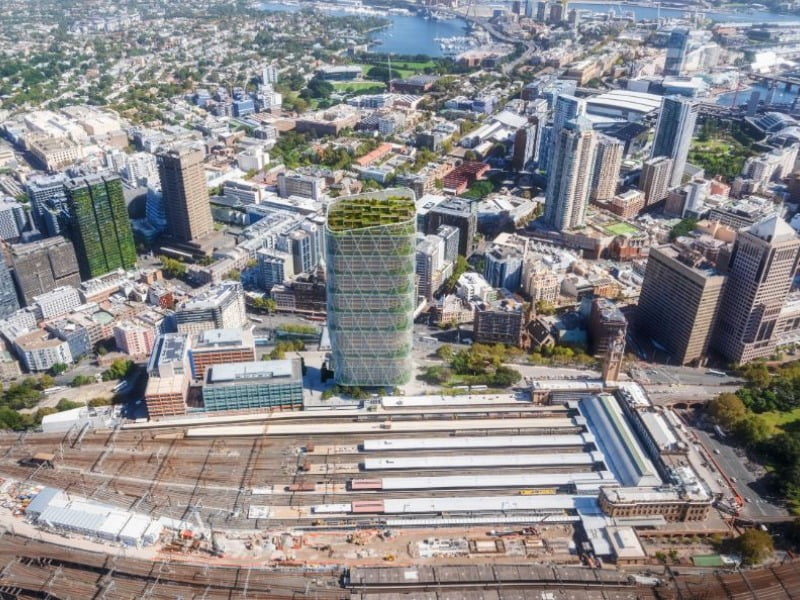NSW Premier Gladys Berejiklian and software giant Atlassian will announce funding details for the massive Sydney Innovation and Technology Precinct near Central train station on Thursday morning, including plans for the world’s tallest hybrid timber building as Atlassian HQ at the site.
Nearly two years after announcing plans for the redevelopment of Henry Deane Plaza and its adjacent sites to create more than 130,000 square metres of mixed-use floorspace earmarked as growing room for Australian technology companies – including startups and scaleups.
The precinct funding marks the next stage in the state’s audacious plan to cement Sydney as a tech industry centre for the time zone, potentially dragging the NSW political centre of gravity from property and finance to technology and innovation.

It is understood the redevelopment plans and public funding commitments for the redevelopment site have been in place in since the start of the year, but its announcement had been postponed on the back of bush fires and coronavirus.
But Ms Berejiklian is today expected to fire the starters gun on the development of the precinct alongside the Atlassian co-founders as anchor tenants of the precinct.
Despite the dramatically changed short-term work environment through the work-from-home influence of the coronavirus pandemic, the Sydney Innovation and Technology Precinct project is the definition of ‘shovel-ready’, and the state will announce its plans to move ahead without delay.
Meanwhile, Atlassian will unveil plans for its 40-story headquarters building at the site, which was designed – after a global search – by New York-based architects SHoP, and Australian practice BVN as the design team.
The design of timber, with a glass and steel facade includes a mix of outdoor and indoor spaces and will use an energy-efficient approach that features natural ventilation and large planted terraces giving access to nature.
Atlassian was the first anchor tenant to sign-up for the Sydney Innovation and Technology Precinct and has been with the project since Day One. Japanese technology giant NEC Corporation joined the precinct as a foundation tenant in April.
The government expects that when complete, the precinct will host 25,000 workers primarily in the tech sector.
“Technology can turbo-charge Australia’s recovery. That’s why we’re building this precinct. We want to create jobs, ideas and innovation,” Atlassian co-chief executive Scott Farquhar said in a statement.
“This will be home to thousands of workers and the best new ideas. If you want to work in tech – this is the place you will want to be.”
“Sydney has the potential to be one of the world’s leading technology cities and the creation of a tech precinct sends a loud signal that we’re in the race to take a slice of the world’s most valuable market. That’s an exciting place to be.”
Construction of the Atlassian headquarters will generate 2500 additional jobs and add almost one billion dollars a year to the Australian economy. Once complete, 4000 Atlassian staff will use the building.
The existing YHA at the site will be revitalised and incorporated into the lower levels of the new building. The existing heritage parcel shed will also be incorporated into the development.
“This building will breathe new life into this part of Sydney. It’s an amazing design. We’ve searched the world to find the best architects and engineers to put it together,” Mr Farquhar said.
“We’re embarking on this project at a critical time. Projects like these will help the state and the nation bounce back from the massive impact of COVID-19.”
Do you know more? Contact James Riley via Email.


Message to Atlassian and our Premier. As exciting as this project is, it still fails to incorporate outreach beyond the CBD to create a more forward looking innovation-culture ecosystem that incorporates outer urban and peri-uban areas, as well as regional Australia—particularly at a time of the mainstreaming of working remotely, and the continued unaffordable cost of housing in inner Sydney, which is accelerating the demographic movement of both young professionals and those moving towards retirement, towards these areas.